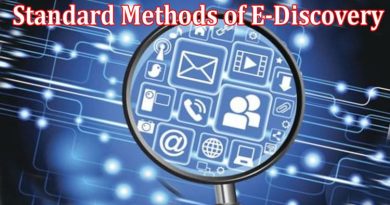Maximize Efficiency: Simplify Your Efforts by Efile California
Traditional tax filing methods can feel burdensome and time-consuming in this fast-paced digital age. However, technology has significantly changed how we handle our finances, including tax filing.
One such innovation is the introduction of efile in California. It is a streamlined and convenient electronic filing system designed to maximize efficiency and simplify the tax-filing process.
In this article, we will explore the benefits of efile california and how it can revolutionize your approach to tax preparation.
How long does California E-file take?
The processing time for California e-filed tax returns can vary. Suppose there are no errors or issues with the return. In that case, the California Franchise Tax Board (FTB) aims to process and issue refunds within 21 days.
However, certain factors, such as the complexity of the return or the need for additional verification, can extend the processing time. Taxpayers can check the status of their e-filed returns on the FTB’s website or through their online accounts.
How to do eFile a document under seal?
A person looking to efile california a document cannot determine its level of security. If the filer labels a document as “confidential,” it will only be treated as confidential if there is a legal requirement or the court decides so. Certain document types, like an Unlawful Detainer complaint, are automatically considered confidential based on the law.
In line with the directives of the California Court Rules, particularly rules 2.550 to 2.551, people are afforded the opportunity to provide documents to specific courts in a state known as “conditionally under seal.” This stipulation ensures the document’s confidentiality is preserved until the court rules on its final status. Moreover, when submitting their documents, individuals have the provision to use the “Clerk’s Message” box to convey any essential details to the clerk.
Concerning electronically filing sealed documents, every court has its own rules. The best course of action is to get in touch with a court personally if you have any specific inquiries concerning its rules.
Where is electronic court filing available in California?
The electronic court filing, also known as eFiling, is available in various courts throughout California. While the availability may vary by county and specific court, efile california has been implemented in many jurisdictions across the state.
Some of the counties and courts that offer electronic court filing services in California include:
- Los Angeles County Superior Court
- Orange County Superior Court
- San Francisco Superior Court
- San Diego Superior Court
- Santa Clara County Superior Court
- Alameda County Superior Court
- Riverside County Superior Court
- Sacramento County Superior Court
- San Bernardino County Superior Court
- Ventura County Superior Court
It’s important to note that the availability and specific procedures for eFiling can differ among different courts. Therefore, it is advisable to visit the official website of the respective county or court to obtain accurate and up-to-date information regarding electronic court filing in California.
How to eFile for small claims matter?
In California, each county’s superior court decides when and how to introduce electronic court filing and which cases it applies to. Self-represented litigants represent themselves in court without an attorney. They are not obligated to use electronic court filing as mandated by California Rule of Court 2.253.
Even if eFiling is required for other cases, self-represented litigants can still submit their documents in paper form at the court. However, if self-represented individuals file electronically, they can do so in counties where eFiling is available for Small Claims or other applicable case types.
What are the benefits of efile california?
eFiling in California offers numerous benefits across various domains beyond tax filing. Let’s explore the advantages of eFiling in California across different areas:
Time-Saving and Convenience
E-filing eliminates the need for physical visits to courts, offices, or tax agencies, saving valuable time and effort. Documents can be submitted online anytime, providing convenience and flexibility to individuals and businesses.
Faster Processing and Reduced Delays
eFiling expedites the processing of documents and reduces delays associated with manual handling. By eliminating the need for physical transportation, documents reach their intended recipients promptly, ensuring faster reviews, approvals, and legal proceedings.
Enhanced Accuracy and Error Prevention
Electronic filing systems often include built-in validation checks that reduce the likelihood of errors. Required fields, format restrictions, and automatic calculations help ensure that submitted documents are accurate and complete, minimizing the risk of rejections or the need for resubmissions.
Cost Savings
E-filing eliminates printing, paper, postage, and physical storage expenses. This leads to cost savings for individuals, businesses, and government agencies. Additionally, reduced paperwork reduces administrative overheads, streamlining operations and improving efficiency.
Improved Access to Justice
eFiling promotes equal access to justice by removing barriers associated with physical proximity. It enables individuals from remote areas or with mobility limitations to file documents. It participates in legal proceedings without needing in-person visits, ensuring fair and inclusive access to the justice system.




